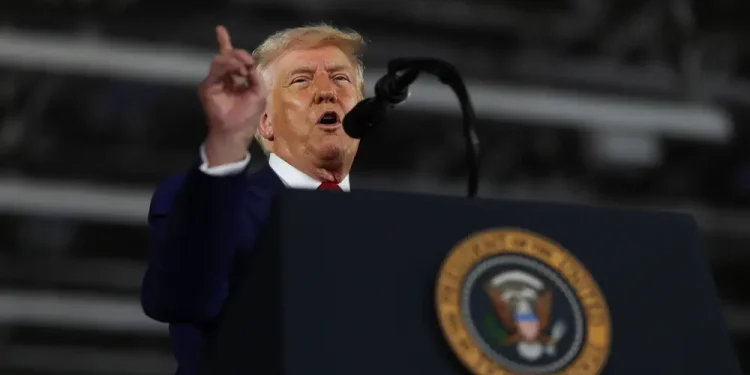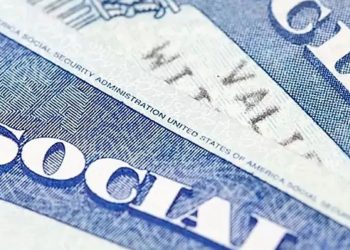Stocks edged up Thursday following President Trump’s announcement of a new trade deal with the United Kingdom.
The S&P 500 climbed 33 points, or 0.6%, to 5,664, while the Dow Jones Industrial Average rose 254 points, also 0.6%, closing at 41,368. The Nasdaq Composite led gains with a 1.1% increase.
Following the news, Bitcoin and crude oil prices moved higher, while gold slipped—indicating investors’ growing appetite for riskier assets. Treasury yields also rose, with investors betting that more trade deals are coming and that the Federal Reserve may not need to cut interest rates as aggressively, according to the Associated Press.
President Trump announced the U.S.-U.K. agreement from the Oval Office Thursday morning, highlighting “billions of dollars of increased market access for American exports, especially in agriculture.” He also noted that the U.K. would remove non-tariff barriers that “unfairly discriminated against American products.”
A 10% base U.S. tax on imports from Britain, implemented by the Trump administration in April, will remain. However, the deal allows the first 100,000 vehicles shipped from British automakers to the U.S. to fall under that 10% rate. Any additional vehicles will face a 25% tariff, according to the White House.
“We still have our 10% tariff on which will produce $6 billion of revenue for the United States,”
—Commerce Secretary Howard Lutnick, Thursday White House briefing
Back in April, the administration imposed a 10% tax on British imports along with 25% tariffs on autos, steel, and aluminum. That move hit the U.K. hard, especially given that over a quarter of its 2024 auto exports went to the U.S., per the U.K.’s Office for National Statistics.
After the deal’s announcement, Trump urged Americans to buy stocks before more trade agreements and the upcoming reconciliation bill take shape.
“You better go out and buy stock now,” Trump said. “Let me tell you, this country will be like a rocket ship that goes straight up.”
House Speaker Mike Johnson, a Republican from Louisiana, said on Tuesday that he expects the House to wrap up work on the budget resolution by Memorial Day.
While it’s unclear when the next trade deals might be announced, Trump posted on Truth Social that there are “many more to come.”
Volatility Ahead
Markets saw early momentum Thursday before the trade deal announcement, but Solita Marcelli, Chief Investment Officer Americas at UBS Global Wealth Management, warned of turbulence ahead.
“While we continue to expect a variety of deals or sector carve-outs to materialize before the 90-day pause period ends in July and maintain our conviction in the secular AI trend, we think investors should be prepared for volatility,”
—Marcelli wrote in an email
Earlier in the week, Treasury Secretary Scott Bessent told a House committee that the U.S. is negotiating with 17 out of 18 key trading partners.
The U.S.-U.K. agreement may be a positive start, but negotiations with larger players—like China—could prove more challenging.
China, the world’s second-largest economy, again urged the U.S. on Thursday to lift tariffs ahead of planned talks this weekend between Treasury Secretary Bessent and a Chinese delegation.
On Wednesday, Trump reiterated that he wouldn’t lower his 145% tariffs on Chinese goods just to begin negotiations. Meanwhile, China renewed its call for the U.S. to drop what it calls unilateral tariffs.
“The U.S. needs to show sincerity to talk and be prepared to rectify its wrongdoing and cancel unilateral tariffs,”
—Commerce Ministry spokesman He Yadong, via Bloomberg
Citing ongoing uncertainty around U.S. trade policy, the Federal Reserve said Wednesday it would hold its benchmark interest rate steady at 4.25% to 4.5%.









